11 Best Solutions “VIDEO_TDR_FAILURE” (nvlddmkm.sys failed)
The video_tdr_failure error occurs due to an incompatible graphics driver or damaged hardware. It is also known as a blue screen of death, preventing users from doing important work. It mainly occurs while playing games. According to several affected users, when the error appears, they run in to reboot loop or frequent computer crashes. Speaking about the error, Video means Display Adapter, and TDR stands for Timeout Detection and Recovery, which is used to prevent the blue screen of death errors. Blue screen errors are different compared to other general errors because you may need some knowledge about hardware as well as the Blue Screen Of Death depends on the hardware. When the error occurs, the entire screen goes blue, and the error message Your PC ran into a problem and needs to restart shows on the screen.
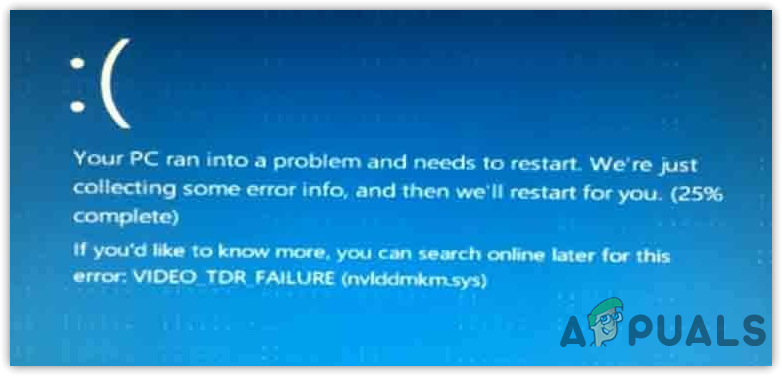
Even though there are many reasons behind the error message, we have listed some main of them below:-
- Graphics Card is Overheating: The overheating of the graphics card can trigger this issue. You may need to check the GPU temperature before applying any significant changes to the computer.
- Too Many Running Processes: As it turns out, running too many background processes at the same time can increase the load on the GPU, which can causevideo_tdr_failure error.
- Damaged Ram or Hard Disk: The blue screen of death mainly occurs due to the damaged ram or hard disk. We advise you to diagnose your computer properly. If one of your hardware is damaged, you will likely encounter a video_tdr_failure error.
- Incompatible Graphics Driver: Incompatible Graphics Driver can be one of the main reasons which can cause this error. If you encounter a video_tdr_failure error, you will need to reinstall the graphics driver.
So now we have some basic knowledge about the error, below are the solutions that can potentially fix the video_tdr_failure error.
1. Boot Windows in Safe Mode
The first thing you need to do is boot the Windows in Safe Mode. If you are in a reboot loop or your computer has frequent crashes, then you have to boot the Safe Mode to make significant changes to the system which may fix your issue. Booting the Windows in Safe Mode will not use the graphics card, which helps troubleshoot issues regarding graphics failure. Safe Mode starts the Windows in diagnostic Mode to determine the source of the problem.
Note: You will need Safe Mode to apply all the methods.
- To start Windows in Safe Mode, turn off your computer 3 times in a row to trigger Advanced Troubleshooting
- Once you saw the options screen, navigate to Troubleshoot>Advanced option>Startup Settings
- Click Restart from the bottom right and wait for the Windows to open
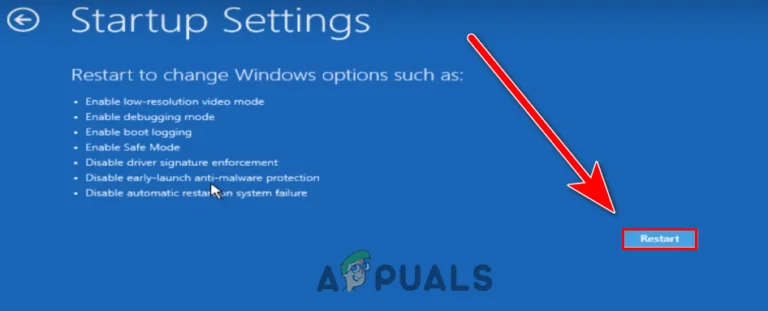
Start Windows in Safe Mode - Once done, move on to the solutions mentioned below.
2. Modify Registry Files
After booting the Windows in Safe Mode, you will need to add the registry file called TdrDdiDelay. It specifies the number of seconds that Windows allows the thread to leave the driver. You need to put the 20 as its Value Data to prevent the error message. It is advised to Create a Registry Backup before making any significant changes to the system.
- To modify the registry, press the Windows + R keys at the same time to open Run Program
- Type Regedit and press Enter
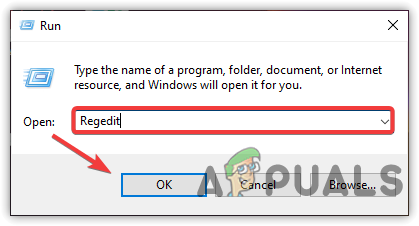
Launching Registry Editor - Click Yes when Windows prompts to UAC
- Now navigate to the following path
Computer\HKEY_LOCAL_MACHINE\SYSTEM\CurrentControlSet\Control\GraphicsDrivers
- Right-click on empty space and hover on New
- Click DWORD (32-bit) Value from the list of options
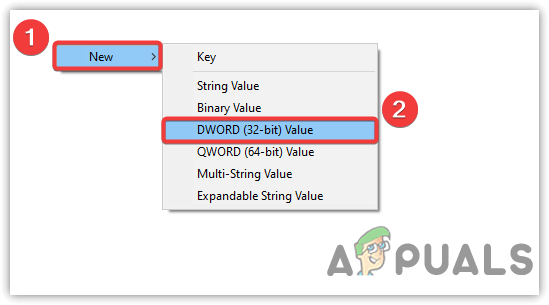
Creating Registry Key - Rename the file as TdrDdiDelay and double-click on it
- Change its Value Data from 0 to 20
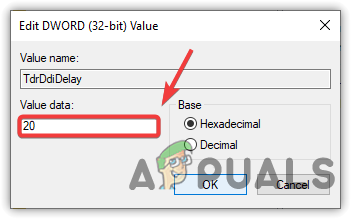
Changing TdrDdiDelay Value - Click OK and restart your computer to see if this method works.
3. Reinstall Graphics Driver With DDU
An incompatible or corrupted graphics driver can trigger video_tdr_failure error. You will need to reinstall the graphics driver using DDU to fix this. DDU stands for Display Driver Uninstaller, which allows users to remove drivers entirely from the computer. However, the device manager does not remove the drivers entirely, so we recommend DDU over the device manager.
3.1 Uninstall Graphics Driver
- To uninstall the graphics driver, download Display Driver Uninstaller
- Wait for the downloading to complete then right-click on the ZIP Folder
- Click Extract to DDU and navigate to the extracted folder
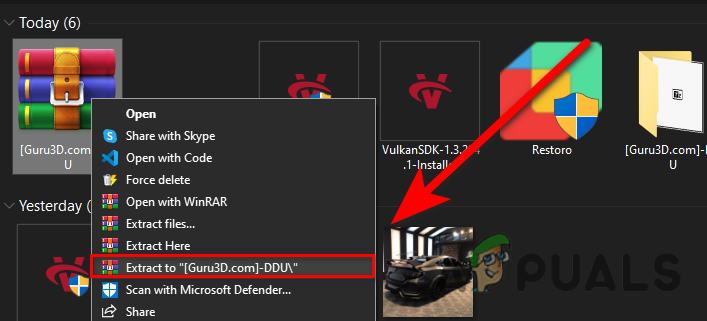
Extracting DDU ZIP Folder - Now double click on the DDU application
- Click Extract and navigate to the folder
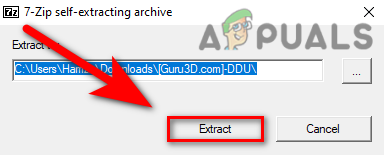
Extracting DDU Application - Run the DDU application by double-click on it
- Select the Device type and its vendor
- Then, click on Clean & Restart and wait for the clean uninstall of the graphics driver
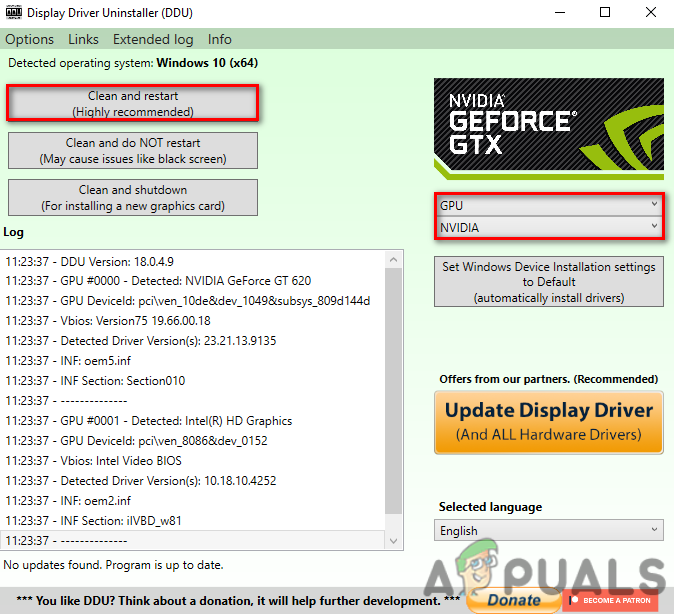
Selecting Graphics Card Driver For the Uninstallation Process
3.2 Install Graphics Driver
- Now you need to install the compatible graphics driver.
- To uninstall the graphics driver, go to the graphics card Manufacturer’s website
- Navigate to the driver’s section and choose your graphics driver
- Click on Search or press Enter
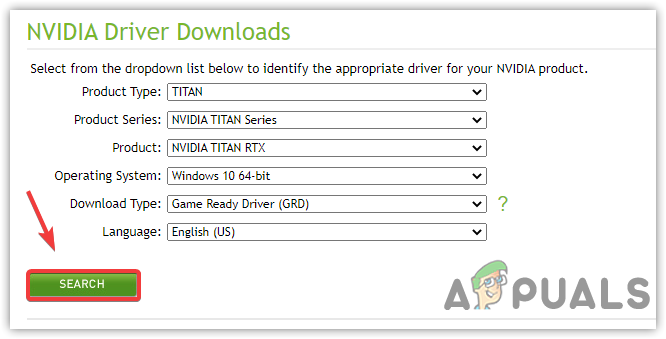
Searching For Driver - Then, click Download to download the graphics driver. If the website asks for the operating system then select your Windows version
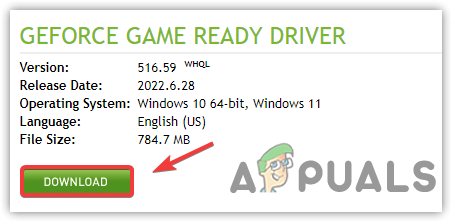
Downloading Graphics Driver - Wait for the download process to complete
- Once done, double-click on the installer and follow the on-screen instructions.
4. Perform Clean Boot
If the above methods did not work, try performing a clean boot on your Windows in safe mode. Performing a clean boot will help if there is any service or a driver causing the blue screen of death error. Clean Boot starts Windows with the minimum drivers and software which prevents irrelevant services at the startup. Want to know more about clean booting, visit our article on Clean Boot Windows.
- To perform a clean boot, click the Start Menu and type MSConfig
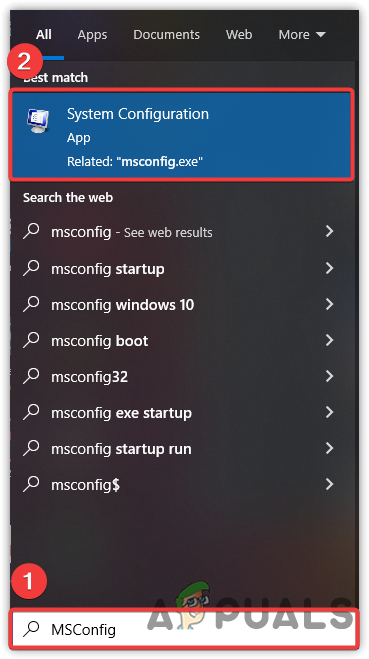
Open System Configuration - Open the System Configuration and click the Selective Startup
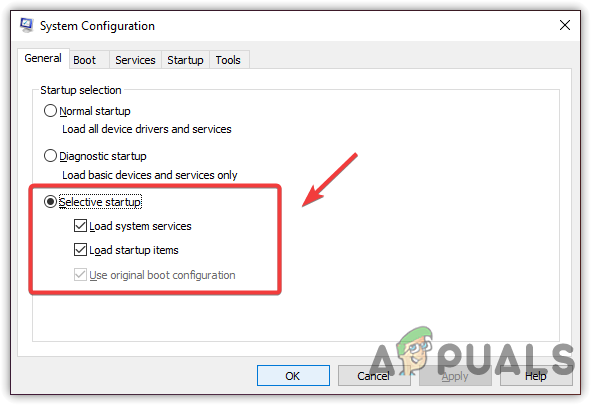
Choose Selective Startup - Now go to the Services tab and click Hide All Microsoft Services then click Disable All
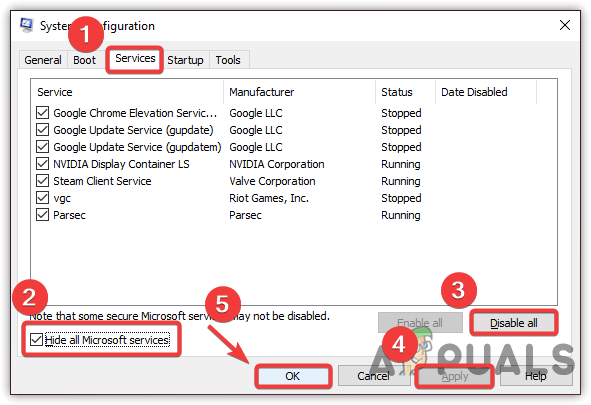
Perform a Clean Boot - Once done, restart your computer and check if the error is fixed.
5. Re-create the nvlddmkm.sys File
The nvlddmkm is a program that allows Windows to communicate with the display driver. If there is any problem with the hardware or driver, nvlddmkm takes the resposibility to trigger the error message. It is also known as Nvidia Windows Longhorn Display Driver Model Kernel Mode created by Nvidia. Restoring the nvlddmkm may aid in fixing the video_tdr_failure error. Below are the steps to restore nvlddmkm.sys:-
- Open File Explorer by pressing the Win + E simultaneously
- Navigate to the following directory
C:/Windows/System32/drivers

Navigating to System32 drivers - Find nvlddmkm.sys and rename it as nvlddmkm.sys.old
- Now click the Start Menu and type Command Prompt in the search bar
- Right-click on the terminal and choose Run As Administrator
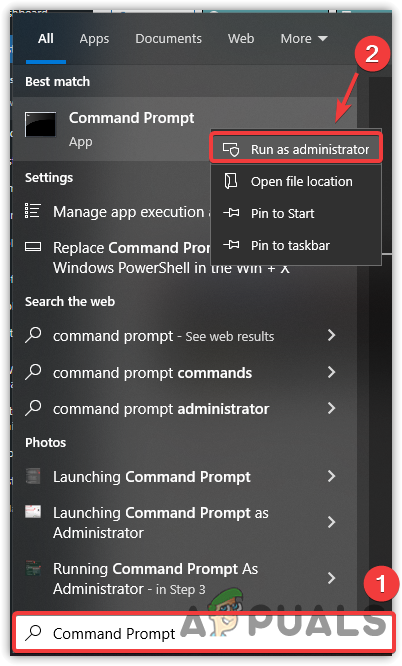
Run Command Prompt As Administrator - Put the following command in the terminal and hit enter
exe nvlddmkm.sy_nvlddmkm.sys
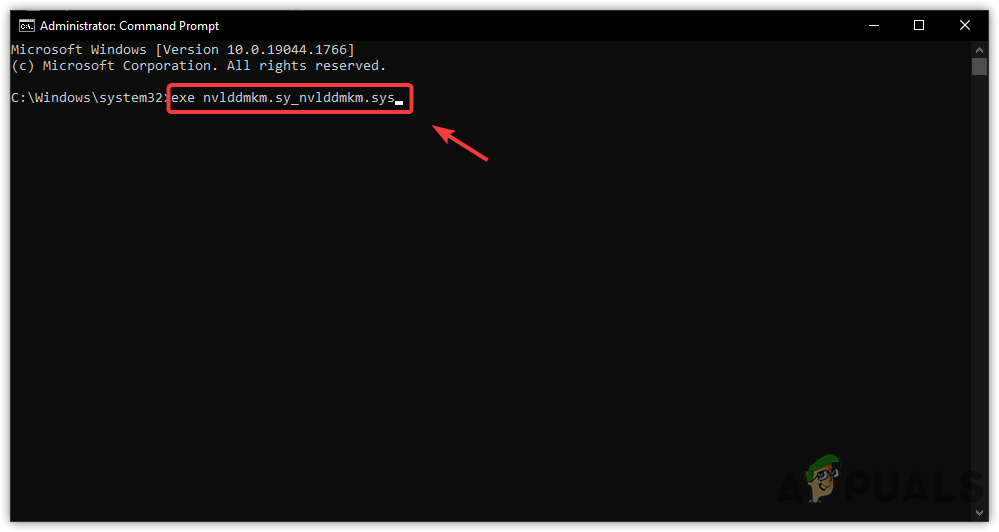
Creating a New nvlddmkm file - Once done, navigate to the C drive and find the Nvidia folder
- Navigate to the Nvidia folder and copy nvlddmkm.sys
- Now paste the file to the following directory
C:/Windows/System32/drivers
- Once done, check if the error persists.
6. Reset Bios Settings
Incorrect Bios Settings might be the reason why you are getting video_tdr_failure error. Resetting the Bios Settings to default will help if any incorrect settings are selected. If this method does not fix the error, try Updating the Bios with the help of our guide.
- To reset the Bios Settings, restart your computer and wait for the logo screen to come up
- Once you saw the logo screen, press the key which takes you to the bios settings
- Note: If you don’t know the Bios key, go to the manufacturer’s website or you may try F12. F10 or Delete keys
- After entering the Bios Settings, press the F9 key to reset Bios Settings
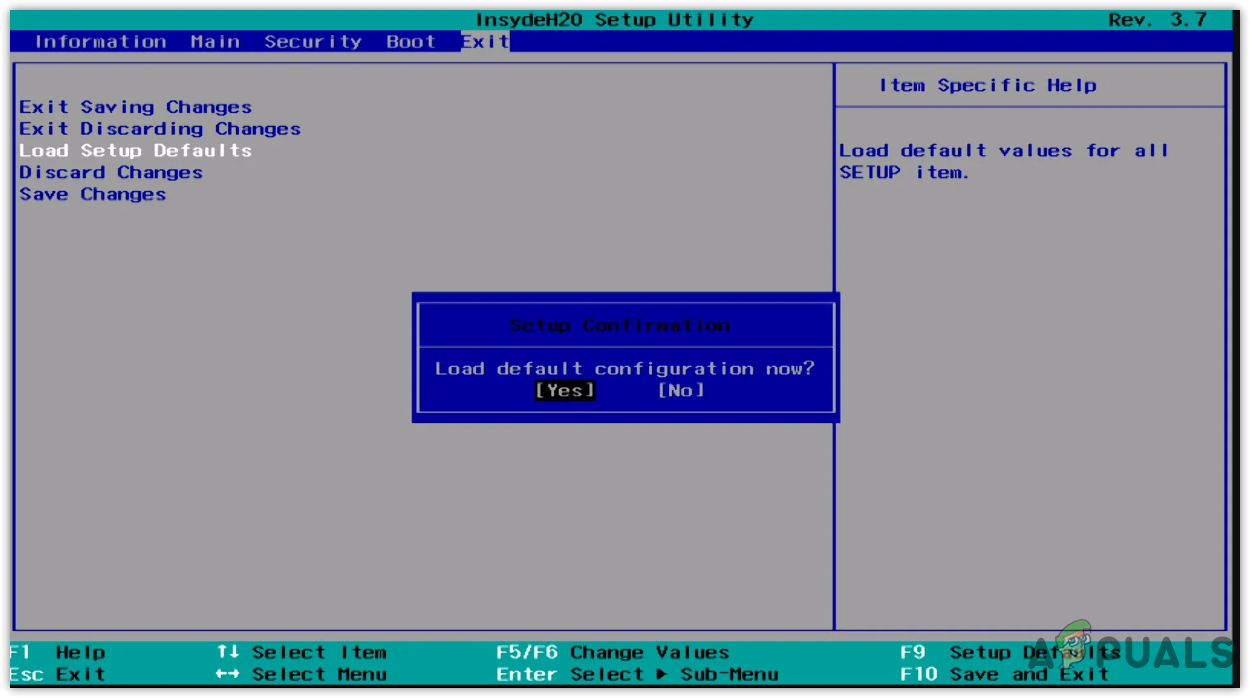
Resetting Bios - Note: The reset key should be mentioned on the bottom right or left
- Once done, restart your computer and see if this fixes.
7. Run Sfc/ Scannow
The video_tdr_failure can be caused by corrupted system files. The corruption of the system files could be caused by random system shutdowns or when the third-party software removes the essential system files. To fix this, you will need to run SFC or System File Checker, a command-line utility used to repair the corrupted files by replacing them with cached ones. In case, this method does not fix the error, you can Use DISM Commands to repair Windows images.
- To run System File Checker, click Start Menu and type Command Prompt
- Right-click on the command prompt and choose Run As Administrator

Launching Command Prompt - Click Yes for administrator privileges
- Once the command prompt is opened, copy and paste the following command then press Enter
sfc /scannow
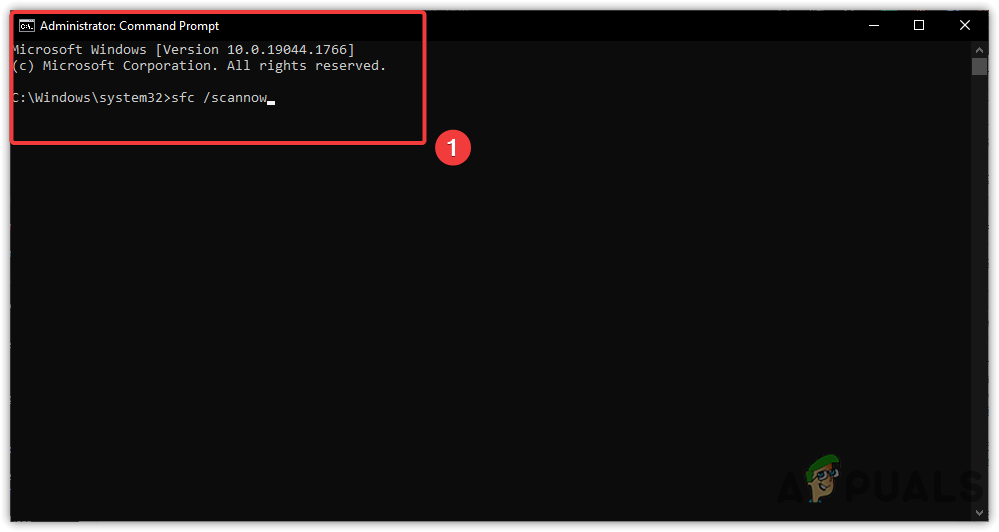
Running Repair Commands - Now wait for the process to complete
- Once done, check if the error is still causing.
8. Perform Memory Check
As we described before, memory issues can be the leading cause of blue screen errors. To fix this you may need to run Windows Memory Diagnostic to ensure that there is no problem with the RAM. However, you can also use some advanced techniques that need some physical computer knowledge. If you know how to open the CPU case, we recommend you take out all the RAM except the last one and start your computer. If the video_tdr_failure error occurs, replace the RAM with the one you put out. If the error does not appear, you will be clear about which RAM was causing the error. You can also perform a memory check if you can’t diagnose the RAM one by one.
- To perform a memory check, click Start Menu and type Windows Memory Diagnostic
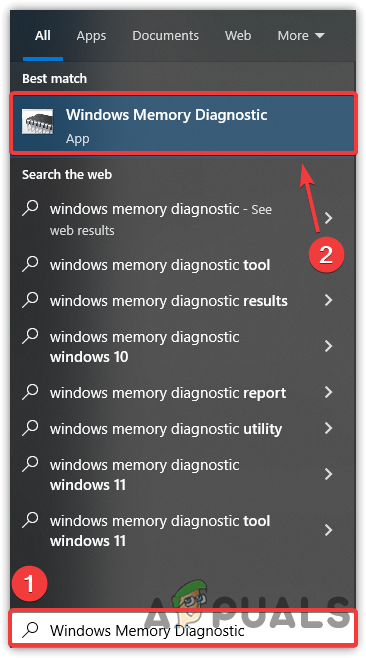
Search Windows Memory Diagnostic - Open the first Settings, click Restart Now and Check for Problems
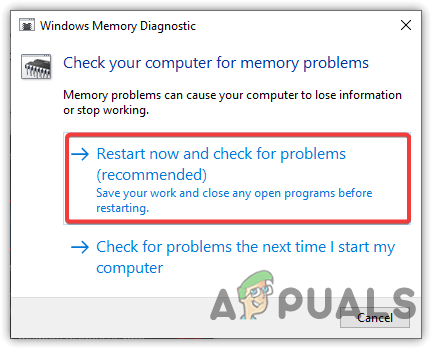
Click Restart Now and Check for Problems - Once done, you will automatically see the result when the computer check for memory problems.
10. Revert/Underclock Graphics Settings
Bad Overclock Settings can be the sole reason for this issue as it can trigger a blue screen of death errors. Usually, if the graphics card is old and cannot handle the game or system apps, you may need to underclock graphics settings which might help fix the video_tdr_failure error.
- Download MSI Afterburner and wait for the downloading to finish
- Install the MSI Afterburner by following the on-screen instructions
- Once done, launch the MSI Afterburner and reduce the Core Clock
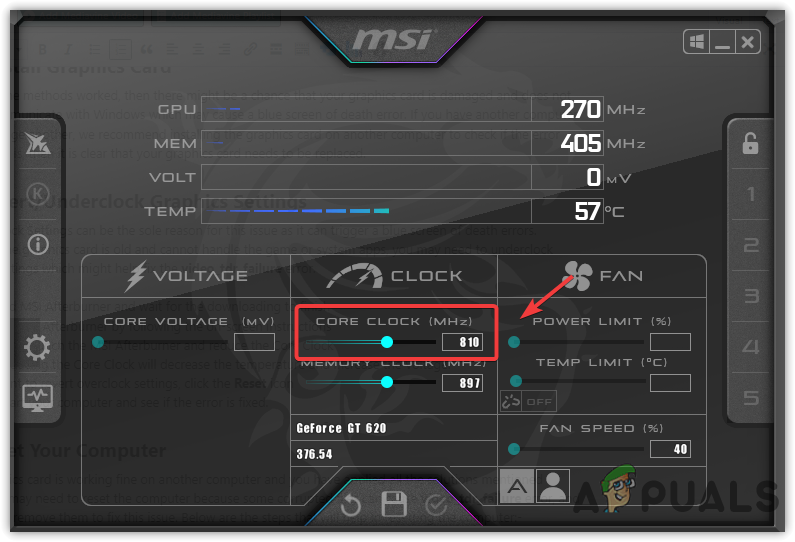
Underclocking Graphics Card - Note: Reducing the Core Clock will decrease the temperature and increase the Voltage.
- If you want to revert overclock settings to default, click the Reset icon
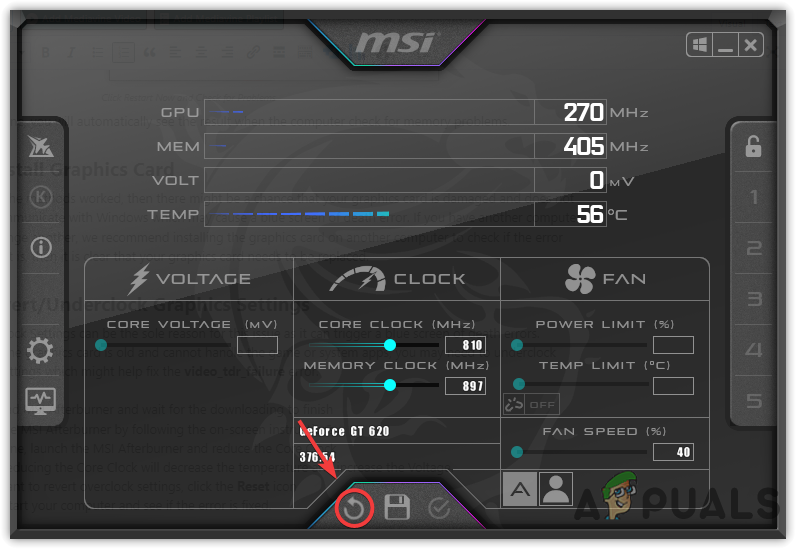
Resetting Overclock Settings - Now restart your computer and see if the error is fixed.
9. Reinstall Graphics Card
If none of the methods worked, then there might be a chance that your graphics card is damaged and does not able to communicate with Windows which may cause a blue screen of death error. If you have another computer or can arrange another, we recommend installing the graphics card on another computer to check if the error persists. If it is, then it is clear that your graphics card needs to be replaced.
11. Reset Your Computer
If the graphics card is working fine on another computer and you have applied all the solutions, you may need to reset the computer because some corrupted files are causing the video_tdr_failure error, and you have to remove them to fix this issue. Below are the steps that will help in resetting the computer:-
- To reset the Windows, launch the Settings by pressing the Win + I simultaneously
- Once the Settings is launched, navigate to Update & Security
- Click on the Recovery option from the left pane
- Click Get Started under Reset this PC
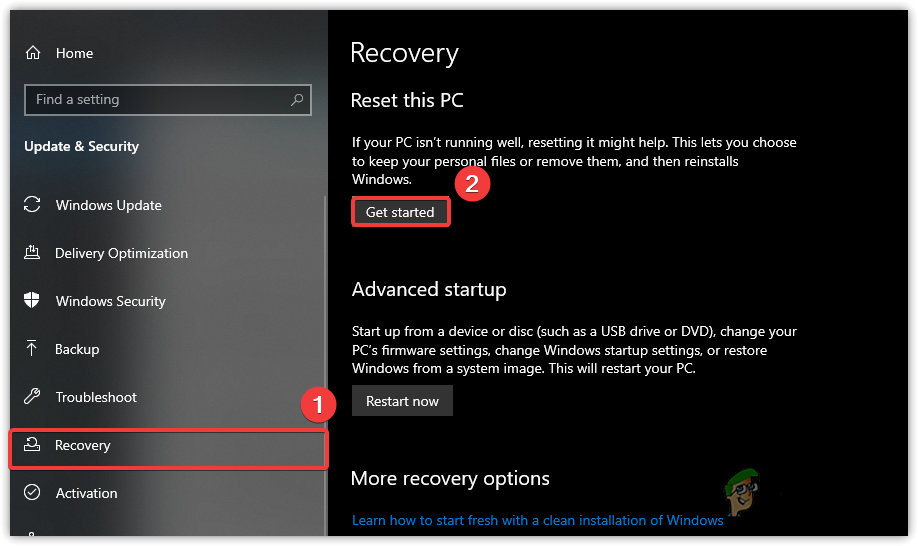
Reset This PC - Choose the option keep My Files
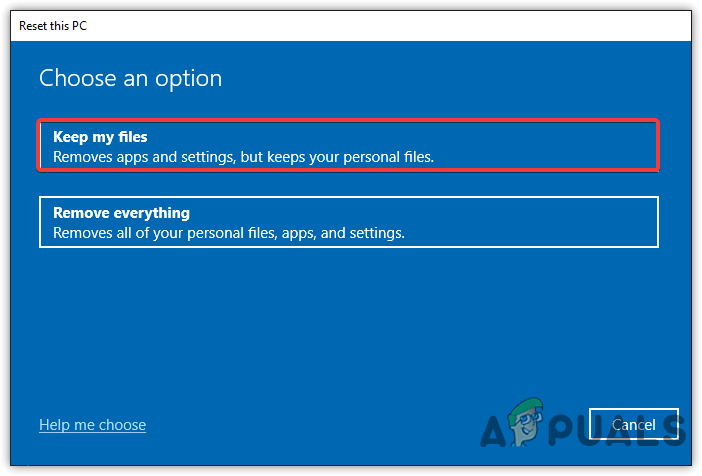
Choose the option Keep My Files - Click Local reinstall then click Next
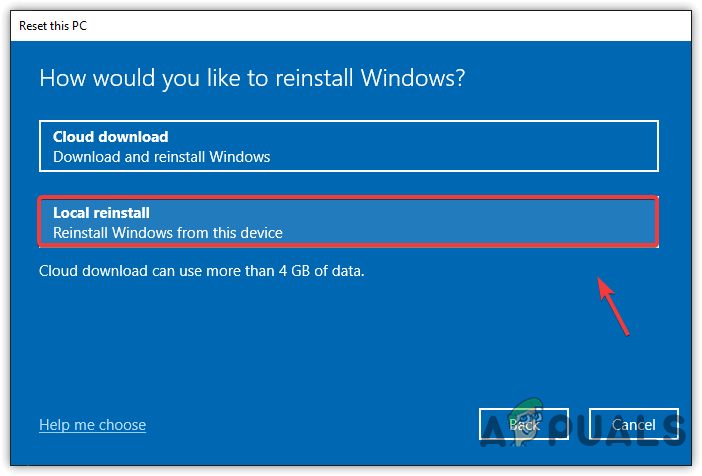
Choose Local Reinstall - Now click Reset and wait for the reset process to finish
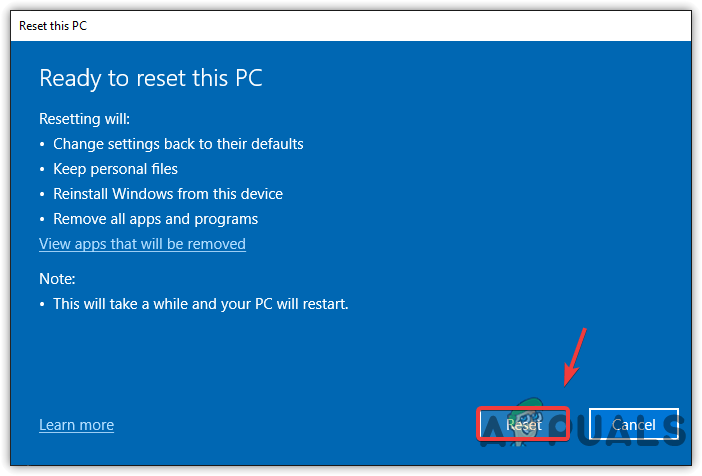
Click Reset - Once done, install the Graphics Driver and check if the video_tdr_failure is still causing.
If none of the methods fix this error, try Reinstalling Windows with the help of our guide.